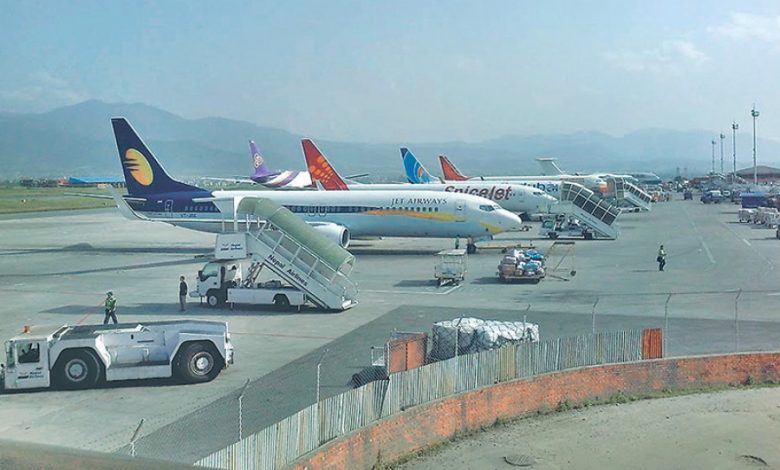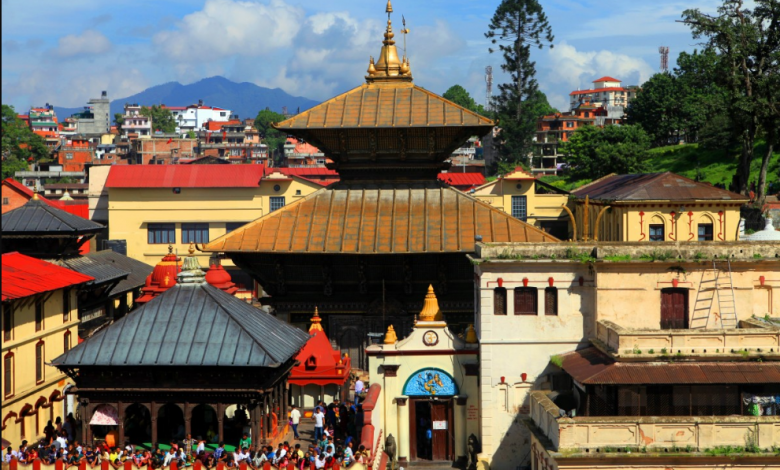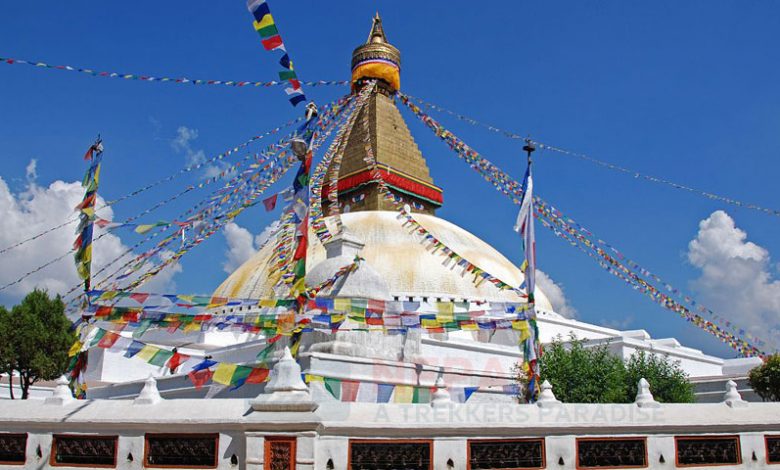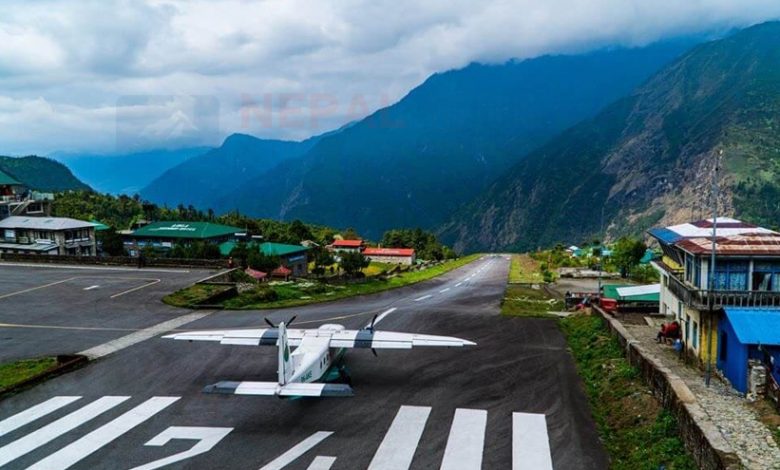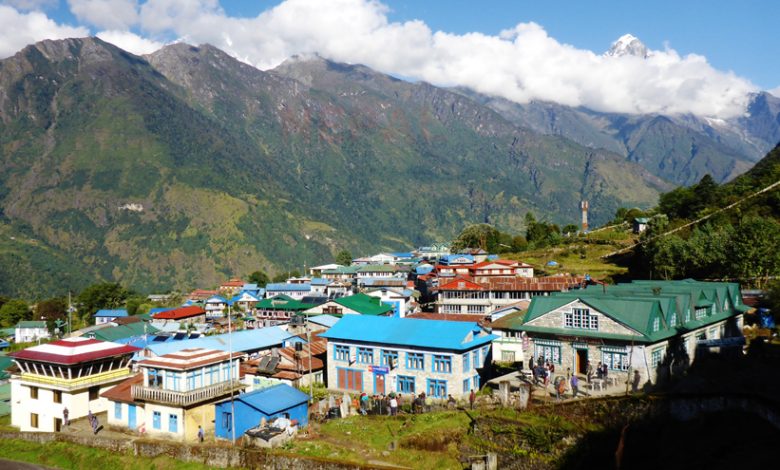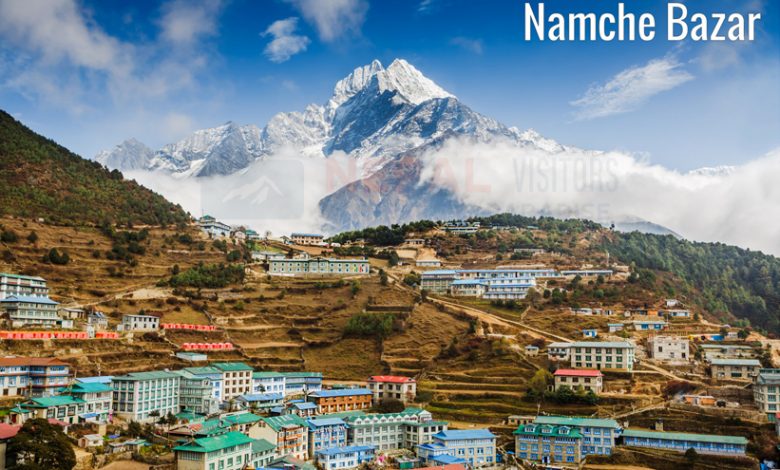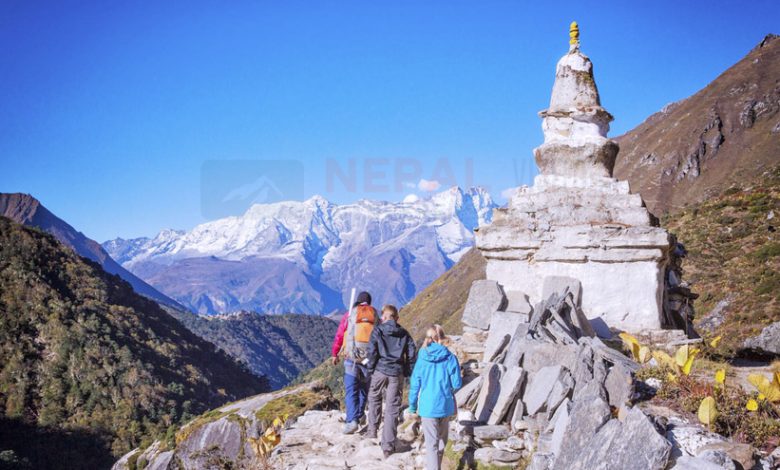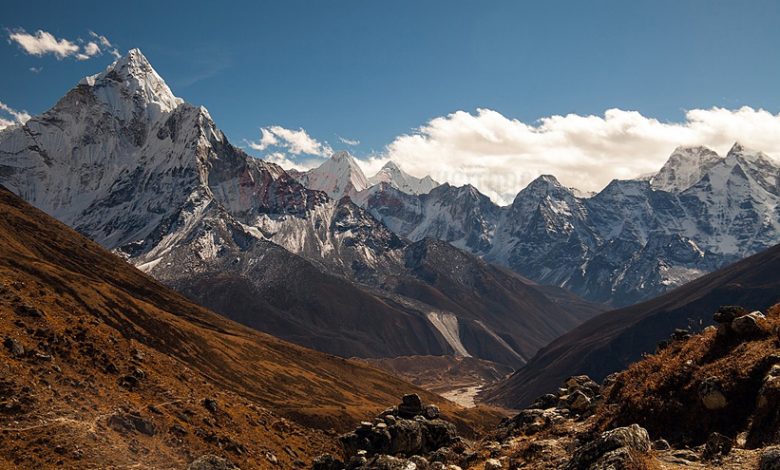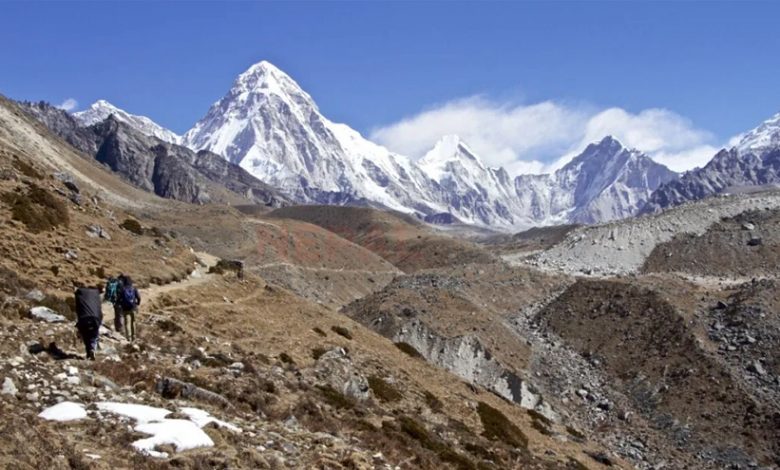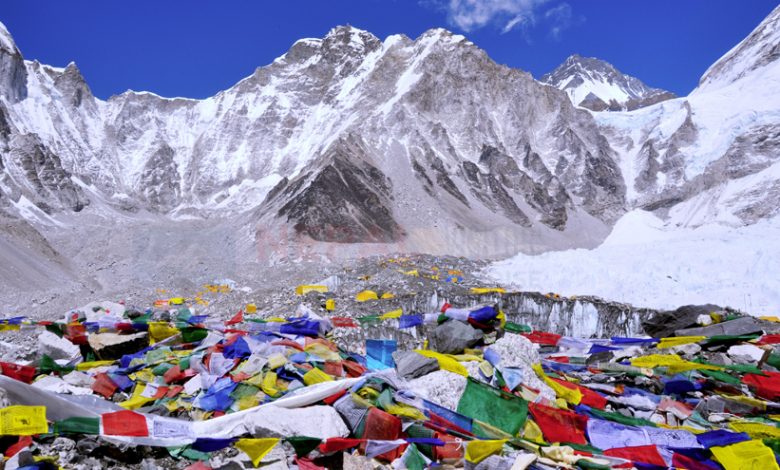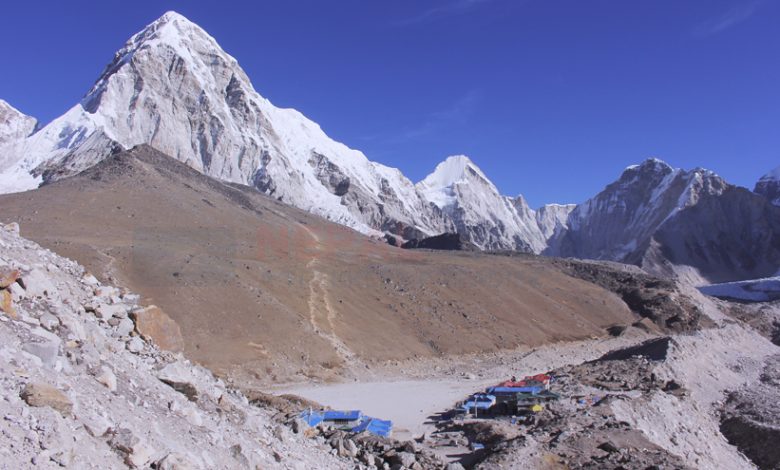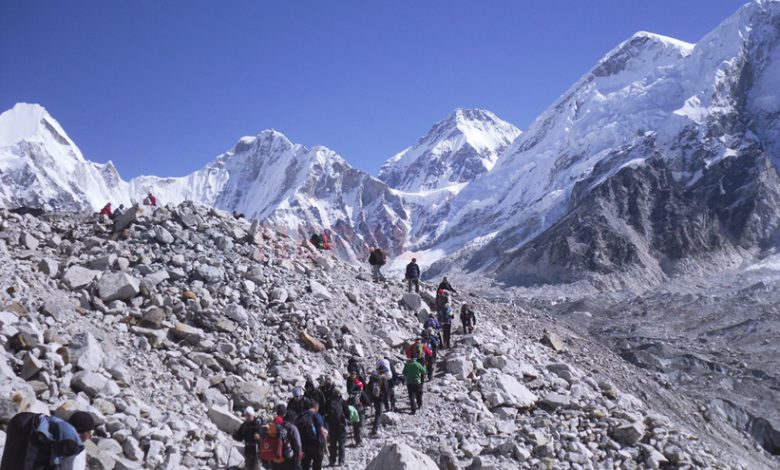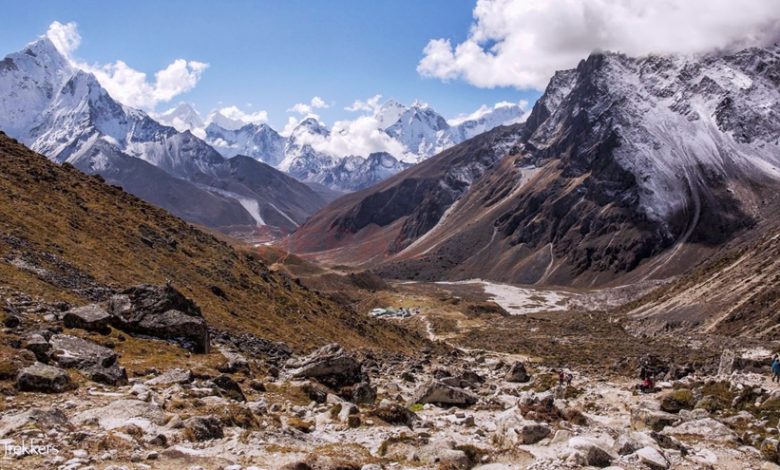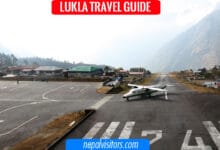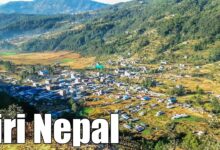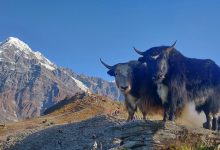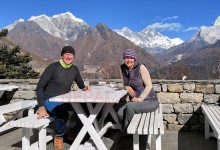Everest Base Camp Trek – 16 Days
Everest Base Camp perched on the Khumbu Glacier at the foot of Everest is at an altitude of 5600 metres which is reached over a period of nine days with two complete rest days enroute. In terms of acclimatisation profile it is very feasible as long as you don't go too fast.
The Everest Base Camp Trek is a spectacular high altitude trek in the mountains of Nepal. Prepare for jaw dropping scenery and a unique cultural experience exploring the challenging trekking routes around the highest mountain in the world.
Everest is more than a mountain and the journey to its base camp is more than just a trek. Along a route dubbed by some as “the steps to heaven,” every bend in the trail provides another photo opportunity — beautiful forests, Sherpa villages, glacial moraines, and foothills. For active adventurers not afraid to break a sweat, our full trekking support staff will bring you close to local cultures before opening a window to the top of the world.
If you want to do the Everest Base Camp Trek, you do it in 16 days. With a rest day in Namche Bazaar and an acclimatization hike to Chhukung Valley, you are most likely to beat the symptoms of altitude mountain sickness (AMS) and your trekking to Mount Everest Base Camp will be comfortable. Cutting it shorter than that and doing it in fewer days is not only bad for your health, it also may take the joy-factor out of your experience. Let us guide you through the basics of the Everest Base Camp Trek, show you the right itinerary and get you everything else you need to do EBC the right way.
The best time of year to undertake the Everest Base Camp Trek is in the spring from February until May. The spring months are probably the most popular in the region as a whole. You might be caught in the occasional snow showers if you catch the end of the winter season, but the weather should be largely stable and dry – perfect for trekking and high altitude climbing.
Know before you go
- This activity is subject to weather conditions on the day. If weather is not suitable for flying, the flight may be rescheduled for the following day
- If the flight is cancelled, you can wait for next day or Alternative way to next destination
- Check all of your necessary things to carry
- Warm clothes and comfortable walking shoes are recommended
A few notes
As of late 2019, flights between Kathmandu to Lukla have been reduced, and I heard maybe even cancelled, due to congestion and runway maintenance at Tribhuvan International Airport. Rather than flying from Kathmandu, airlines are busing people to Ramechhap airport, which is a 5 hour drive from Kathmandu. From here, you fly to Lukla. Flight times are very fast (lasting only 12 minutes) and less likely to be cancelled or delayed due to unfavorable weather conditions. When booking your trek with a tour company, confirm your flight details between Kathmandu and Lukla.
Everest Base Camp Facts
| Trip Duration | 16 days trip |
| Tour Location | Kathmandu – Mount Everest areas – Kathmandu |
| Trek Grade | Difficult |
| Highest Elevation | 5,545 meters / (18,514 feet) | Kala Patthar |
| Pickup Points | Kathmandu International Airport |
| Trip activities | Pickup + Kathmandu Sightseeing + 11 Days full board hiking + Guide and Porters. |
| Group Size | 2-20 Persons. |
Everest Base Camp Trek Highlights
- Primitive Highlights of Hillary Museum & Sherpa Capital Namche Bazaar.
- Visit amazing Sagarmatha National Park exploring the wilderness vast range of flora & fauna.
- Adorable beauty of Khumjung village & Sherpa culture.
- Dramatic view of the Khumbu region with breathtaking Khumbu glaciers & icefalls.
- Explore the Hillary museum, different high passes trek and majestic views of Mount Everest.
- Admire the beauty of Kala patthar along with the 360° view of the highest peak & many more.
Day 02: Trip arrangements, meeting with staff and sightseeing around Kathmandu Valley
Day 03: Short flight to Lukla (2840m/9320ft)–Trek to Phakding (2610m/8560 ft ) – approximately 3.5 hours
Day 04: Trek to Namche Bazaar (3440m/11290 ft) – Approximately 6 hrs
Day 05: Acclimatization day trip around Namche Bazaar.
Day 06: Trek to Tengboche (3860m/12660 ft) – Approximately five hours
Day 07: Trek to Dingboche (4360m/14300 ft) – Approx. 5 hrs
Day 08: Acclimatization day trip around Dingboche.
Day 09: Trek to Lobuche (4940m/16207 ft) – Approx. 5 hrs.
Day 10: Trek to Everest Base Camp (5300m/17400 ft) – back to Gorak Shep (5170m/16961ft).
Day 11: Hike up to Kala Pattar (5545m/18192 ft) then trek to Pheriche (4270m/14070 ft) – Approx. 7 hours.
Day 12: Trek to Namche Bazaar (3440m/11290 ft) – 6 hours approximate
Day 13: Namche to Lukla (2840m/9320 ft) – Approx. 6 hrs.
Day 14: Fly back to Kathmandu
Day 15: 1 Reserve day (if the lukla to Kathmandu weather will be bad)
Day 16: Final departure, or extend your tour for other activities in Nepal.
- Arrival and departure transfers to and from Kathmadu International Airports.
- 4 Nights accommodation at Kathmandu with BB Plan.
- Full day Kathmandu sightseeing tour with private vehicle and english speaking cultural guide.
- Transfers to Ramechhap Airport fly to Ramechhap-Lukla-Ramechhap for members and a guide.
- Oximeters for oxygen saturation as well as heart rates in order to avoid any risk of high altitude sickness
- Quality hot bag with filled hot water to warm your body or feet inside the sleeping bag
- Three meals a day (BLD-tea-coffee) and twin sharing teahouse accommodation during trek.
- 15 Kg Baggage allowance for trekking per person carrying by porter (s).
- Experienced trekking guide during trekking as per group size.
- National Park entry fee (Sagarmatha National Park).
- Khumbu-Pasang Lhamu Village entry permits.
- All wages and medical insurance for the guide and porters.
- First Aid medical kits for the Group and the staffs.
- Free assistance service for cargo and duty clearance in domestic flights.
- Our service charge and Government Taxes levied in Nepal.
- Wages, meals and accommodation of your guide and porters.
- Insurance and trekking gear for your guide and porters.
- Complete pre-departure information.
- 1 farewell dinner in Kathmandu
- Nepal entry visa fees
- Extra night accommodation and meals behind schedule (Foods and accommodations before and after the trek)
- All kind of beverages (coke, beers, water etc).
- Additional cost by out of management control due to the landscape, weather condition, illness, change of government policies, strikes, and physical condition, etc.
- Surplus luggage charges for domestic airport
- Personal expenses such as snacks, laundry, telephone, WIFI, hot shower on a trek.
- Travel insurance which has to cover emergency rescue evacuation from the high-altitude up to 5000 m.
- Personal trekking equipment for this trek
- Tips and Gratitudes for guide/drive.
| NO.OF.PERSON | AVAILABILITY | USD PRICE | INR PRICE |
|---|---|---|---|
| 2-4 | Guaranteed | USD 1590 | INR 72340 |
| 5-8 | Guaranteed | USD 1520 | INR 68740 |
| 9-15 | Guaranteed | USD 1480 | INR 64450 |
Do I need a visa? And what about passport requirements?
How much does it cost to climb Mount Everest base camp?
Is it hard to get to Everest Base Camp?
How dangerous is Everest Base Camp?
Do you have any training programs for the trek?
How many people have died climbing to base camp?
How long do you stay at Everest Base Camp?
How is the Accommodation on Everest base camp trek?
We need to book the hotels/accommodation in advance if traveling in autumn and spring as these seasons are the busiest time for the EBC Trek and if traveling in other months then we can find the accommodation easily.
Do you lose weight trekking to Everest Base Camp?
What is the best time to visit Everest Base Camp?
Is there snow at Everest Base Camp?
How do I get from Everest base camp from Kathmandu Everest?
What is the highest base camp on Mount Everest?
Can you trek Everest base camp without guide?
What food should i expect to eat on the trails?
How much additional money do I need per day?
What is the weight limit on Lukla flight?
Do I need travel Insurance for Everest base camp trek?
Is the Everest base camp trek worth it?
Is trekking staff insured and well equipped?
What is the process for tipping?
If your group thinks that the local staff have done an outstanding job and you wish to demonstrate your appreciation, then a tip from the group would be greatly appreciated. At the end of the trek, your leader will collect what you wish to give and will distribute it fairly amongst the crew at a final evening celebration where each individual crew member is acknowledged and thanked.
Do you have other useful information?
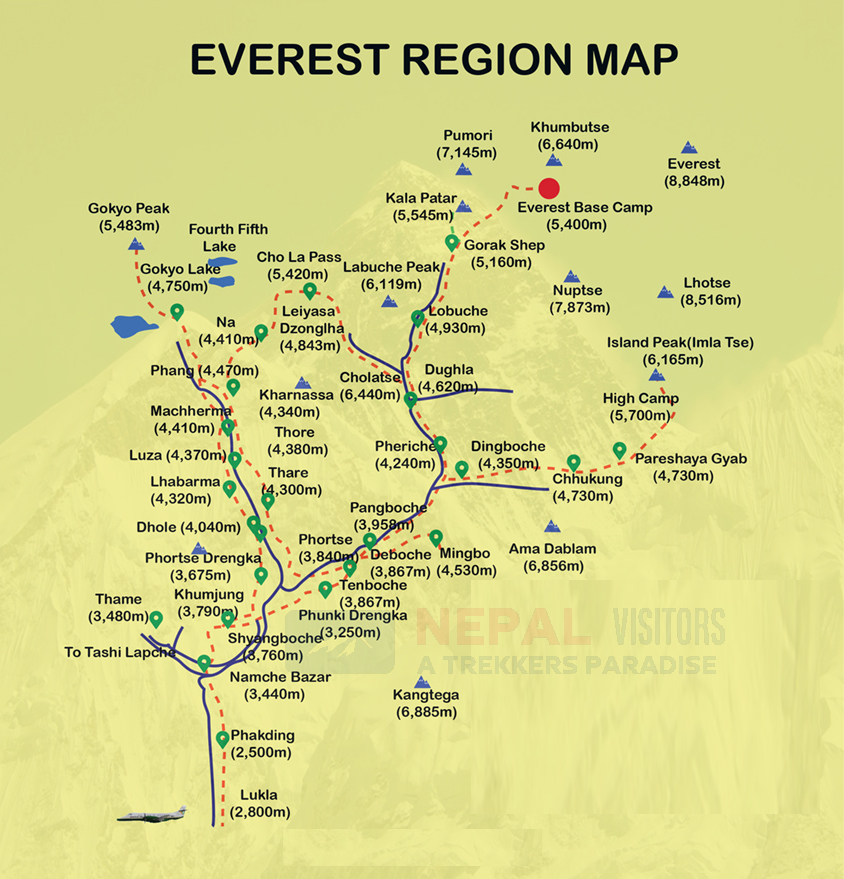
Accommodation, Food And Drink Facility
You will easily find the accommodation at each stop and there are lots of restaurants along the way for a lunch break. The lodges have private rooms for clients with indoor toilets. You even will have luxury lodges in some places with the luxury facilities. But some places have limited lodges that you need to book in advance otherwise they might be full.
Every lodge has a food menu and food items are the same. The cocks are basically trained so the taste of the same foods might be a bit different. You may try the local food also during the trek if you would like. Meet might not be fresh up in the mountain so try to be vegetarian in the trek.
How to Avoid Altitude Sickness
Trekking to Everest Base Camp takes a minimum of 11 days round trip. On average, it takes eight days to reach EBC from Lukla. This allows plenty of time for acclimatization to the higher altitudes as well as ample time to hike the necessary miles everyday. In general, once you ascend higher than 2700 meters, the chances of getting altitude sickness become much higher. Past this altitude, you do not want to ascend any more than 500 meters per day. Even adding an extra 100 meters increases your chances of getting altitude sickness. This rule goes for people of all ages, not just children.
The Mountain | Everest Base Camp Trek | Documentary
Packing list for Everest Base Camp Trek
One of the more daunting tasks you will encounter on the Everest Base Camp Trek is packing for the trek itself! To help you get a head start we have compiled an easy to navigate and complete list of what you will need for the typical Everest Base Camp Trek and similar treks in the region.
- A few pairs of Thermal tops
- Fleece jacket/pullover
- Windcheater – waterproof shell jacket one pair
- Down jacket – ( It will be provided by the company if you do not have your own)
- Comfortable Fleece/wool trousers
- Trekking pants- at least 2 pairs
- Mittens/woolen gloves
- Warm Hiking socks
- Trekking sue with spare laces
- Pair of flip flop
- Underwears & Swiming costume
- Hiking Cotton trousers/t-shirts
- Sun hat/scarf
- Sunglasses
- Sleeping bag -( It will be provided by the company if you do not have your own)
- Trekking poles (Not 100%)
- Day bag above 40 L
- 1 set- Headlamp
- Small lock for the day backpack
- Reusable water bottles- 2 letters
- Water purification tablets/ electric light
- Wash towel
- Toiletries
- Rain poncho
- Basic personal first aid kit
Getting travel insurance
It’s always better to be safe than sorry. Especially for an intense experience like EBC trek, I recommend purchasing travel insurance for your own peace of mind. There has been numerous insurance company of choice because of their comprehensive health coverage with 24/7 medical emergency assistance. As well, the process to making claims is super easy and smooth!
Special Discount
Trekking to Everest Base Camp is completely possible to do on your own. But if you want go with an experienced guide, fill out the form on this page and we’ll connect you with our trusted partners who lead trips throughout Nepal and are highly regarded. By signing up, you’ll get more information on trekking in Nepal as well as an exclusive discount just for Nepal Visitors readers.


